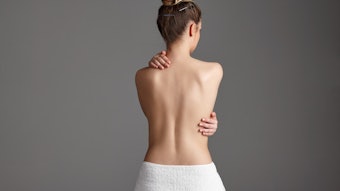
In the past two decades, the number of dermal fillers in the U.S. market has increased by more than 100%, and consumer demand for these treatments has skyrocketed. Key to achieving optimal outcomes is understanding different fillers’ unique physicochemical properties and how that affects their behavior in the skin. “There are a lot of different words we use to describe filler properties: stretch, strength, lift and flexibility are just some of them. It doesn’t matter what you call them, you just need to know what goes where,” says Carolyn Jacob, MD, medical director of Chicago Cosmetic Surgery and Dermatology.
The core measure that injectors need to understand when determining which filler is most appropriate for specific anatomical regions is the filler’s rheology—how the material deforms and changes under mechanical stress. For “Rheologic properties of soft tissue fillers and implications for clinical use” (Journal of Cosmetic Dermatology, January 2021), Nazanin Saedi, MD, of the department of dermatology and cutaneous biology at Thomas Jefferson University in Philadelphia and colleagues compared the rheology of a wide range of dermal fillers.
They noted that the rheology of hyaluronic acid (HA) fillers is determined by the degree of cross-linking, HA particle size, gel concentration and length of the HA chains, with cross-linking and particle size being the key characteristics that define a filler’s behavior under mechanical stress.
“We often talk about high G’ when you want lift and volume, such as in the cheeks and jawline. But G’ isn’t everything when it comes to rheology and lifting capacity,” says Dr. Saedi. “Things to look at also are cohesivity and particle size. A lot of the Juvederm products have a lower G’, but they have more cross-linking so they’re more cohesive and can provide volume that way. Whereas some of the Restylane fillers use larger particle sizes of HA to provide lift. So, we need to understand that cross-linking, particle size and gel concentration all play a role.”
Filler Selection and Indications
Fillers such as Radiesse, Restylane Lyft and Juvederm Voluma XC offer the greatest lift and lowest risk of deformity against mechanical stress. They should not be injected superficially or in areas with a lot of mobility as they will create noticeable bumps, especially during facial movement. They do offer superior revolumization when used in the midface, jawline or hands. “Ten years ago, all we had were medium and low G’ fillers, so we had to put a lot of filler in the face to get volume and lift, and it did not look natural,” says Mariano Busso, MD, a dermatologist with practices in Miami, Florida and Beverly Hills, California. “These fillers allow you to get the most amount of lift with the least amount of product.”
Proper injection technique when performing deep injections in the cheeks to revolumize will help reduce the risk of granulomas and uneven volumization. “If you inject a lot of filler at once, it can be uneven,” says Dr. Busso. “But if you inject small amounts in tracks around the zygomatic bone laterally or superiorly for cheeks, for example, you nicely distribute the filler.”
Continue Reading more about filler characteristics in our Digital Magazine...











